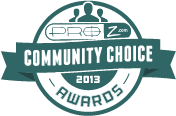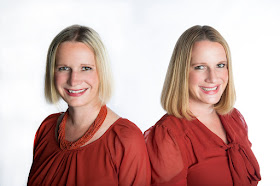A few weeks ago, Judy participated in a "Getting Started in Translation and Interpreting Workshop" in Reno, Nevada, which was organized by the non-profit she spearheads, the
Nevada Interpreters and Translators Association. She presented this workshop with other industry veterans, including well-known French-to-English chemistry translator
Karen Tkaczyk, who made a series of excellent points, which we will include here. This post is intended for beginning or new translators and interpreters, and it's one in a series of posts that should help those looking for information.
Click here and
here for other posts in this series. Judy is also teaching
Intro to Translation at UC-San Diego Extension (online) again this fall, and even though the class is a lot of work, it's also very rewarding to be doing this labor of love that helps educate the next generation. Many students have limited insight into what it takes to be a professional translator, and that's where we come in. In her role as the secretary general of
UNIVERSITAS Austria Interpreteters' and Translators' Association, Dagy regularly mentors newcomers and dispenses (useful) advice, so we have a thing or two to add to this topic.
While here at Translation Times we are known for our positive spin on things, get ready for some tough love! To succeed as a freelance translator, you must do many things. Here are 10 of them. You may take them with a grain of salt as well, of course!
1) Be an outstanding writer. If you don't love books, writing, and can't tell us the last five books you've read, this might not be the right profession for you. Do people constantly tell you that you are a strong, clear, precise writer? If yes, then you are very much on the right path. If not, then you've got some soul-searching to do. Being bilingual is not enough; but you already knew that. Interpreters need to have good public speaking skills and should also love all things language. Do you?
2) Be a top-notch translator. Be honest with yourself (we know this is difficult). How good are you really? Can you compete with people with high-level translation degrees, narrow specializations, or those who have been doing this for 20 years? Are you truly talented? Unfortunately, it's oftentimes quite difficult to get honest feedback on your work because no one wants to hurt your feelings. Find someone who wants to help you grow. Take a class and review your scores and your professor's comments. Find a qualified colleague and pay him/her to evaluate a translation. Ask him or her if your work is good enough. Take it from there.
3) Like paperwork. If you don't like to do paperwork, this profession is going to make you miserable. You will have to do your accounting, taxes, client management, client acquisition, etc. It's a lot of legwork and a ton of paperwork. You can outsource some of these tasks, but in the beginning, that's not cost-effective. Also, you must be very organized (printed and electronic files). If your client asks you for a file from last March, you better know where it is.
4) Have solid computer skills. You absolutely cannot rely on your roommate, your father-in-law, your brother or your wife to help you solve your computer issues. Clients expect perfectly formatted texts done to their precise instructions. If you happen to have a Mac, it's your job to figure out how to make that work with the client's PC-generated documents. The client doesn't care what you need to do to get this accomplished. You must be self-sufficient, as you probably won't be able to afford IT help. And no, you can't complain to your client that your antivirus software crashed. You are a professional, so do the job.
5) Be tough. This business is not for the faint of heart. If you can't take rejection, then you are in for some unpleasant surprises. As an independent contractor, you are always marketing yourself, and it can be hard to hear that someone doesn't want your services. No one said running your own business is easy. It's not.
6) Communicate well. Karen Tkaczyk likes to tell the story that she gets a lot of work from agency clients because she's faster at responding to e-mail than most people. She truly is: you send her an e-mail and you will most likely get an immediate response. Clients like that. You don't have to respond right off the bat, but being reachable and responsive is a huge plus. In today's smartphone-dominated world, there's really no reason not to respond to inquiries in a timely fashion. In Europe, client expectations are a bit more relaxed, but in the US, you better be on it. You should be in front of your computer during business hours.
7) Be reliable.This is a no-brainer, but we've seen it all before. People commit to deadlines and then can't meet them because the dog got sick or their mother-in-law is in the hospital. Some of these reasons are certainly very legitimate, but it doesn't change the fact that you didn't meet the deadline. Most clients, and we include ourselves here, would never, never, never do another project with someone who didn't meet a deadline. You know how many deadlines we've missed since 2002? None. And yes, our computers have crashed. And we've stayed up all night fixing things. And we've driven around town in the middle of the night trying to find a place to print documents because our printer quit working.
8) Be open to feedback. Most clients won't tell you if they don't like your work. They simply won't contact you again, but will probably tell all their contacts that they did not think your work was good. In the rare instance that someone does give you feedback, you should treat it as what it is: a beautiful gift and the chance for you to improve.
9) Be true to your word. Your reputation is the only thing you have. If you say you will do something, do it. It doesn't matter if you commit to hosting a social get-together for your local interpreters and translators association, agree to meet your client for lunch at a specific time, or promise to follow-up to the customer's e-mail the next day. Just do it. If you can't remember things, put a note on your calendar. No excuses. We know some amazing colleagues whom we trust with our lives. We know we will be there when we need them. Those are the folks with whom we collaborate on projects. Not surprisingly, these are also the people who never miss a board meeting, are always on time for lunch, and send you that report for the newsletter that they promised they would.
10) Be able to deal with financial uncertainty. If you think you will make money right after hanging your shingle, you are probably wrong. Save 6-12 months' living expenses before you go out on your own. You might not make a penny the first six months. And you might do really well some months only to have little work the next month. Those are the realities of self-employment. If you don't have the stomach for it, don't run your own business. If you have a second income in your family, that certainly helps. In this business, it's either feast or famine, and every single linguist has gone through it, including us. It's not fun. If the thought of this makes you cringe, then you are better off working in-house. Just like with any profession, there are no guarantees. Even the best master's degree from the best university or the best of intentions don't guarantee a job or clients (same for every other field: law, real estate, dentistry, etc.).
We think this is a good start, but would love to hear from our friends and colleagues (experienced or not). Did we miss anything essential? What advice would you give to people just starting out? Which are the essential skills that translators need? How about interpreters?




















